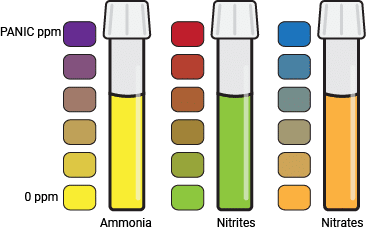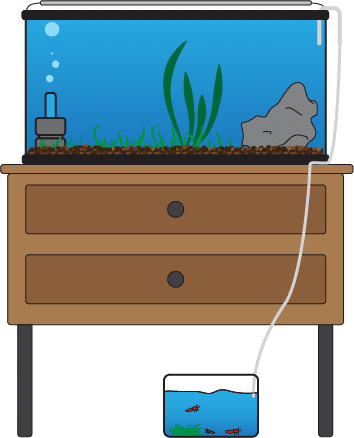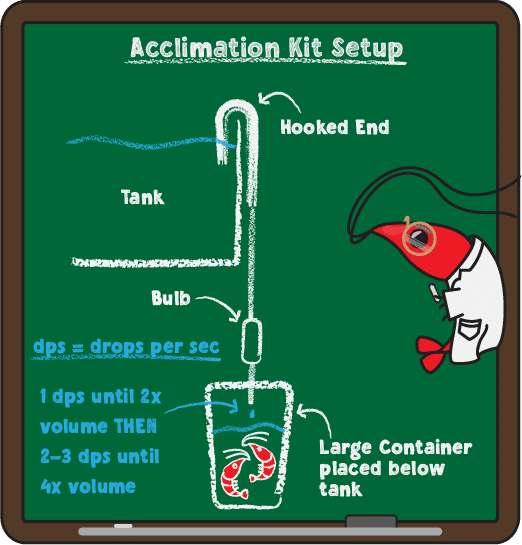

Proper acclimation is quite literally life or death for freshwater shrimp. New shrimp keepers often think the process is like acclimating fish, where you simply dump a few cups of water in the bag over 30-60 minutes then release the fish. Doing this would cause significant stress or the death of your new shrimp friends, and I doubt you want that. Shrimp acclimation is not difficult to do but does require a little more time to ensure a healthy transition into their new home. The rest of this guide takes you through the Shrimply Approved™ method of shrimp acclimation. That starts by preparing your tank.
If you are putting your new shrimp into a freshly cycled tank, it is important to verify that it is actually cycled. This means ammonia and nitrites consistently at 0 ppm and nitrates below 20 ppm for at least a few days, which generally won’t happen for 3-8 weeks after initial setup. If cycling is not done properly, then ammonia levels may shoot up and kill your shrimp. No one wants that.


The acclimation process takes a few hours so it is important to be prepared. That means having all the equipment necessary for proper drip acclimation along with 3-4 hours to pick up and acclimate the shrimp without being rushed. This is not to say you can’t do anything else during that time, but it is recommended you check your acclimation setup every 30-60 mins to ensure water isn’t overflowing.
Depending on how you are buying your shrimp, the process may vary slightly:
Picking up shrimp in-stores: It is important to figure out how to make the trip from the store to your tank as stress-free as possible. The key is to avoid:
Ordering online: This is the easiest option that requires little planning, as most online sellers already take the precautions mentioned above to avoid stressing your shrimp. All you need to do is be around for delivery so the package doesn’t sit outside and get too hot or cold, depending on where you live. This concern can be avoided if the seller uses insulated packaging for shipping, which most do.
Once your shrimp arrive safely, it is time to acclimate!
The goal of the acclimation process is to get your shrimp comfortable with your tank water. Shrimp are sensitive so fast changes in water conditions cause stress, lowering a shrimp’s ability to fight illnesses or killing them outright. Dropping them directly from their bag into your tank would be like if you were teleported from a balmy spa into a snowstorm while still in your bathing suit—Shocking, to say the least.
As such, equipment and instructions for safe acclimation are included below.

Once completed, your new shrimp friends should be right at home in the tank, although they may take a few days to start getting adventurous. Now you are an official shrimp keeper – Congratulations!
Proper acclimation is an important step toward raising happy and healthy shrimp but there's a lot more to learn. Shrimply Explained is dedicated to helping you be successful in the hobby and we do that with tips, discounts, and news delivered to your email!
If you want to learn more about shrimp, then check out The Shrimp School, or continue onto our next lesson SB 108: Differences Between Male and Female Shrimp
